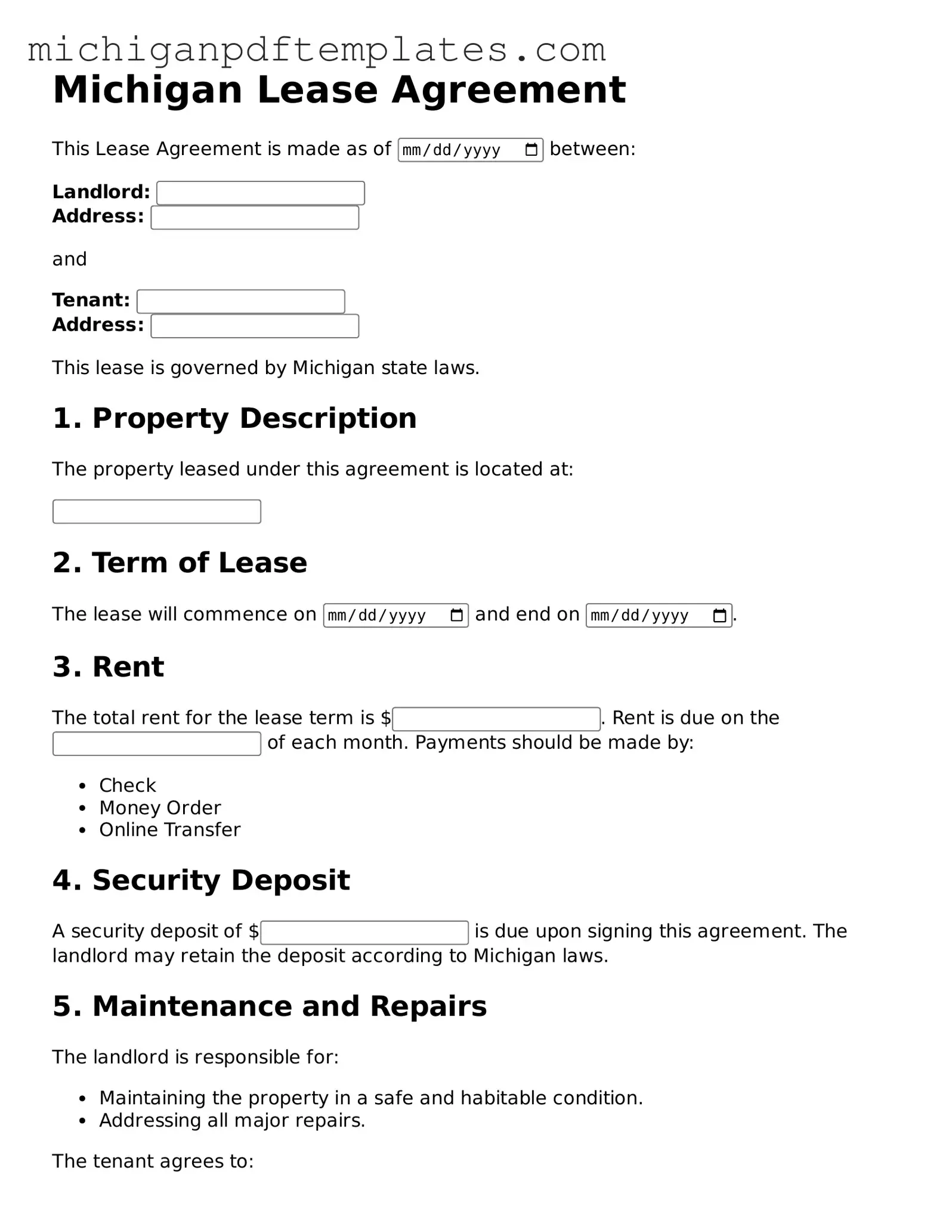The Michigan Lease Agreement form serves as a crucial document in the rental process, outlining the rights and responsibilities of both landlords and tenants. This legally binding contract typically includes essential details such as the duration of the lease, the amount of rent, and the payment schedule. Additionally, it specifies terms regarding security deposits, maintenance responsibilities, and rules for property use. By clearly defining these aspects, the lease helps to prevent misunderstandings and disputes between parties. Tenants can expect to find provisions related to late fees, termination conditions, and the process for renewing the lease, all designed to protect their interests. Likewise, landlords can outline their expectations for property upkeep and tenant behavior. Overall, the Michigan Lease Agreement is a foundational element in establishing a clear and fair rental relationship, ensuring that both parties are on the same page from the outset.
